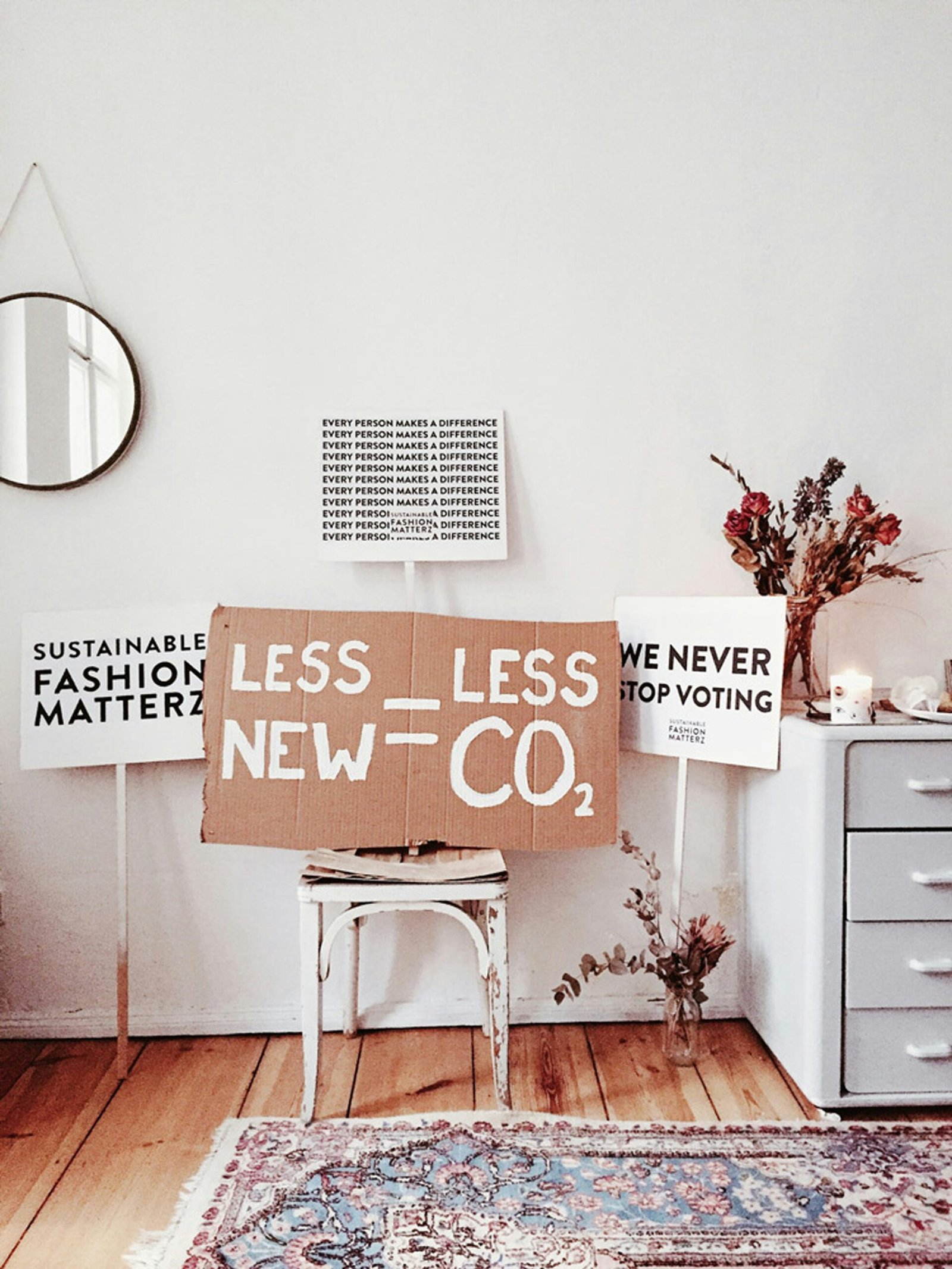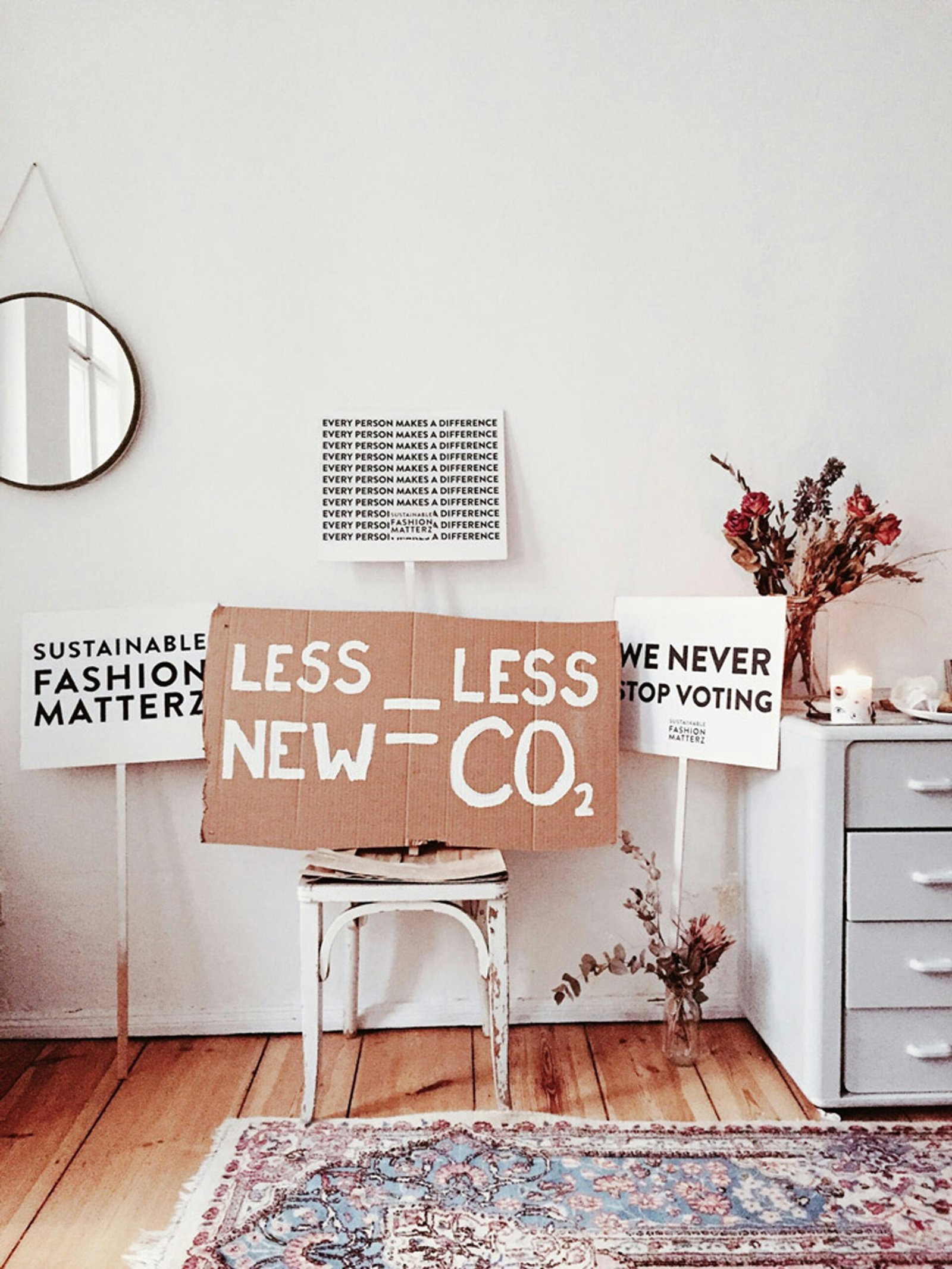
Introduction to Sustainable Fashion
Sustainable fashion represents a transformative approach within the apparel industry, focusing on minimizing environmental impact and promoting social responsibility. Unlike traditional fashion practices, which often involve extensive use of natural resources, chemical-intensive processes, and exploitative labor conditions, sustainable fashion strives to create a more ethical and eco-friendly system. This movement is characterized by the utilization of renewable and organic materials, reduction of waste through recycling and upcycling, and ensuring fair labor practices throughout the supply chain.
The importance of sustainable fashion cannot be overstated. The conventional fashion industry is a major contributor to environmental degradation, responsible for significant carbon emissions, water pollution, and textile waste. By adopting sustainable practices, the fashion industry can significantly reduce its ecological footprint. For example, many sustainable brands now use organic cotton, which requires less water and fewer pesticides than conventional cotton, or recycled polyester, which helps reduce plastic waste.
Additionally, sustainable fashion addresses critical social issues. Fair trade and ethical labor practices are central to the movement, ensuring that the individuals involved in the production process receive fair wages and work under safe conditions. This shift not only improves the livelihoods of workers but also fosters a more equitable global economy.
The rise of sustainable fashion is largely driven by increased consumer awareness and demand for eco-friendly choices. Modern consumers are more informed about the environmental and social impacts of their purchases, leading to a growing preference for brands that align with their values. This heightened awareness has prompted many fashion companies to adopt more sustainable practices, thereby contributing to a broader cultural shift towards sustainability.
The Evolution of Sustainable Materials
The fashion industry’s shift towards eco-friendly practices has significantly spotlighted the evolution of sustainable materials. Among these, organic cotton has emerged as a prominent player. Unlike conventional cotton, which relies heavily on synthetic pesticides and fertilizers, organic cotton is grown using natural processes that promote soil health and biodiversity. The absence of harmful chemicals not only reduces environmental impact but also ensures safer working conditions for farmers.
Another notable material is hemp, lauded for its minimal environmental footprint. Hemp grows rapidly, requires little water, and improves soil quality through phytoremediation. Its durability and versatility make it a favored choice for various fashion items, from clothing to accessories. Recycled fabrics are also gaining traction, with materials like recycled polyester and nylon made from discarded plastic bottles and fishing nets. These fabrics not only reduce landfill waste but also lower the demand for virgin resources.
Innovative textiles such as Tencel and Piñatex are revolutionizing the sustainable fashion landscape. Tencel, derived from sustainably sourced wood pulp, is produced through a closed-loop process that recycles water and solvents, minimizing environmental impact. Its softness, breathability, and biodegradability make it an attractive alternative to traditional fabrics. Piñatex, made from pineapple leaf fibers, offers a sustainable leather substitute that utilizes agricultural waste, providing a new revenue stream for farmers while reducing waste.
The growing popularity of these materials among designers and consumers is a testament to the increasing demand for sustainable fashion. Brands are actively seeking out eco-friendly alternatives to meet consumer expectations for ethical and environmentally responsible products. As awareness of the environmental impact of fashion continues to rise, the adoption of sustainable materials is set to become a cornerstone of the industry, driving innovation and fostering a more sustainable future.
Ethical Production Practices
The fashion industry has long been scrutinized for its often unethical production practices. However, the rise of sustainable fashion has brought a renewed focus on ethical production, emphasizing fair labor practices, safe working conditions, and equitable wages. Ethical production is not merely about compliance but creating a systemic change that respects both people and the environment.
Fair labor practices are foundational to ethical production. Brands committed to sustainable fashion ensure that their workers receive fair wages and work in safe conditions. These companies often go above and beyond the minimum legal requirements to provide benefits such as healthcare and education. For instance, Patagonia and Eileen Fisher are well-known for their commitment to fair labor practices, ensuring their workers are treated with dignity and respect.
Certifications play a crucial role in ensuring these ethical standards are met. The Global Organic Textile Standard (GOTS) is one such certification that guarantees textiles are produced in an environmentally and socially responsible manner. Similarly, Fair Trade certification ensures that producers receive fair compensation and work under safe conditions. Brands like People Tree and Pact are certified by these organizations, providing consumers with assurance that their products meet high ethical standards.
Transparency and traceability are essential components of ethical production. Brands that prioritize these aspects provide clear and accessible information about their supply chains. This transparency allows consumers to make informed choices, fostering trust and accountability within the industry. Everlane, for example, is renowned for its transparent pricing and detailed information about its factories and production processes.
Incorporating ethical production practices is not just beneficial for workers but also enhances the brand’s reputation and consumer trust. As the demand for sustainable fashion grows, more brands are likely to adopt these practices, making ethical production the norm rather than the exception.
The Role of Technology in Sustainable Fashion
Technology is profoundly reshaping the landscape of sustainable fashion, driving forward innovations that reduce waste and enhance efficiency. One of the most significant advancements is in fabric recycling, where new techniques and machinery enable the breakdown of old textiles into reusable fibers. Companies like Evrnu and Worn Again Technologies are pioneering processes that transform post-consumer waste into high-quality, reusable materials. These innovations not only minimize landfill waste but also reduce the dependency on virgin resources.
3D printing is another technological breakthrough that is making waves in the fashion industry. This method allows designers to create intricate patterns and structures with minimal material waste. By utilizing 3D printing, companies can produce on-demand, reducing excess inventory and the environmental footprint associated with traditional manufacturing processes. Brands such as Adidas and Ministry of Supply are leveraging this technology to create customized, sustainable apparel that caters to individual consumer needs while maintaining eco-friendly practices.
Digital fashion is also emerging as a revolutionary concept within sustainable fashion. By creating virtual garments, designers can test and showcase their creations without the physical waste associated with sample production. This approach not only saves resources but also provides a platform for experimenting with innovative designs. Startups like The Fabricant are at the forefront of this movement, offering digital-only collections that push the boundaries of creativity and sustainability.
Moreover, technology is enhancing the overall efficiency of supply chains. Blockchain and IoT (Internet of Things) technologies are being implemented to track and verify the origin of materials, ensuring transparency and ethical sourcing. Companies like Provenance and IBM are developing systems that allow consumers and businesses to trace the journey of a product, from raw material to finished good, thereby promoting responsible consumption and production practices.
These technological advancements are not just trends but pivotal elements in the ongoing evolution of sustainable fashion. By integrating cutting-edge technology, the fashion industry is paving the way for a more sustainable future, where innovation and environmental stewardship go hand in hand.
Consumer Behavior and Sustainable Choices
In recent years, consumer behavior has significantly shifted towards sustainability, with a growing number of individuals prioritizing eco-friendly fashion choices. This shift is largely attributed to the rise of conscious consumerism, where consumers are more aware of the environmental and ethical implications of their purchases. The demand for transparency from fashion brands has never been higher, as consumers seek to understand the origins of their clothing and the sustainability practices behind their production.
Social media and influencers play a pivotal role in shaping consumer attitudes towards sustainable fashion. Platforms like Instagram and TikTok have become powerful tools for spreading awareness about eco-friendly fashion trends. Influencers who advocate for sustainable lifestyles are inspiring their followers to make more environmentally responsible choices, further driving the demand for sustainable brands. The impact of these digital platforms cannot be understated, as they provide accessible information and foster a community of like-minded individuals dedicated to sustainable living.
Making eco-friendly fashion choices can be straightforward with a few practical tips. One effective approach is to buy second-hand clothing. Thrift stores, online resale platforms, and vintage shops offer a wide range of stylish options that minimize waste and reduce the demand for new production. Additionally, choosing quality over quantity is crucial. Investing in well-made, durable pieces ensures a longer lifespan for garments, ultimately reducing the frequency of purchases and the associated environmental impact.
Supporting sustainable brands is another key aspect of making eco-conscious fashion choices. Consumers should look for brands that prioritize ethical labor practices, use environmentally friendly materials, and have transparent supply chains. Certifications such as Fair Trade, GOTS (Global Organic Textile Standard), and B Corp can help identify brands committed to sustainability. By making informed purchasing decisions, consumers can contribute to the growing movement towards a more sustainable fashion industry.
Challenges and Criticisms of Sustainable Fashion
The sustainable fashion industry, while burgeoning with promise, faces several notable challenges and criticisms that warrant thorough examination. One significant issue is greenwashing, a practice where brands falsely claim to be environmentally friendly for the sake of marketing. This not only misleads consumers but also undermines genuine sustainability efforts. Brands must therefore prioritize transparency, providing verifiable information about their eco-friendly practices to build trust and credibility.
Another prominent challenge is the higher cost associated with sustainable products. Ethical production methods, fair wages, and the use of sustainable materials often result in increased prices. This can deter price-sensitive consumers from embracing sustainable fashion. However, the long-term benefits of durable, high-quality clothing can offset the initial investment. Moreover, as demand for sustainable fashion grows, economies of scale can potentially reduce costs, making eco-friendly options more accessible.
Scalability of sustainable practices also poses a significant hurdle. Many sustainable brands operate on a smaller scale, which can limit their ability to compete with fast fashion giants. To overcome this, collaboration within the industry is essential. Sharing best practices, investing in sustainable innovations, and forming alliances can help smaller brands amplify their impact and reach a broader audience.
Education plays a crucial role in addressing these challenges. Consumers need to be informed about the environmental and social impacts of their fashion choices. This knowledge can drive more conscious purchasing decisions and increase support for sustainable brands. Similarly, ongoing innovation is vital for the sustainable fashion industry. Research into new materials, production techniques, and business models can lead to more effective and scalable solutions.
In conclusion, while the sustainable fashion industry faces significant challenges, they are not insurmountable. By addressing issues like greenwashing, cost, and scalability through transparency, collaboration, and education, the industry can continue to grow and drive positive change.
Successful Sustainable Fashion Brands
Sustainable fashion has seen a remarkable shift in recent years, driven by innovative brands that prioritize eco-friendly practices. These brands not only advocate for environmental responsibility but also set new standards in the fashion industry. One of the most notable examples is Patagonia, a pioneer in sustainable fashion. Patagonia has long been committed to environmental stewardship, utilizing recycled materials for its products and actively participating in environmental campaigns. Their “Worn Wear” program encourages consumers to repair, reuse, and recycle their clothing, significantly reducing waste.
Another exemplary brand is Stella McCartney. Known for luxury fashion without compromise, Stella McCartney has championed sustainability by using organic cotton, recycled textiles, and cruelty-free materials. The brand’s dedication to ethical practices extends to every aspect of production, including the use of renewable energy in their facilities and transparent supply chains. Their innovative approach has not only garnered critical acclaim but also inspired other luxury brands to follow suit.
Emerging startups are also making waves in the sustainable fashion landscape. One such startup is Reformation, which is committed to making stylish clothing with a smaller environmental footprint. Reformation tracks the environmental impact of each garment and invests in sustainable practices such as using deadstock fabrics and minimizing water usage. Their transparency and dedication to reducing carbon emissions have resonated with eco-conscious consumers.
Everlane is another brand that has gained popularity through its “Radical Transparency” policy. By openly sharing the costs and production processes behind their products, Everlane builds consumer trust and promotes ethical manufacturing. The brand’s commitment to using sustainable materials, such as recycled polyester and organic cotton, further solidifies its position in the eco-friendly fashion market.
These successful sustainable fashion brands demonstrate that it is possible to combine style with sustainability. By setting high standards and innovating within the industry, they not only cater to the growing demand for eco-friendly fashion but also inspire a broader movement towards environmental responsibility. The impact of these brands is a testament to the potential for positive change within the fashion industry.
The Future of Sustainable Fashion
The future of sustainable fashion is poised to be transformative, driven by innovation, regulation, and evolving consumer preferences. As awareness around environmental issues grows, the fashion industry is expected to witness significant advancements in sustainable practices. Potential innovations include the development of eco-friendly materials, such as biodegradable fabrics and recycled fibers, which can substantially reduce the environmental footprint of clothing production. Additionally, technological advancements in manufacturing processes, such as 3D printing and zero-waste pattern making, promise to revolutionize the way garments are produced, minimizing waste and conserving resources.
Policy and regulation will play a crucial role in shaping the future of sustainable fashion. Governments and international organizations are likely to implement stricter environmental standards and regulations to ensure that the fashion industry adheres to sustainable practices. This could include mandates on waste management, the use of non-toxic dyes, and the reduction of carbon emissions. Such regulations will not only hold manufacturers accountable but also encourage the adoption of greener technologies and practices industry-wide.
Consumer preferences are continually evolving, with an increasing number of individuals prioritizing sustainability in their purchasing decisions. This shift is driven by a growing consciousness of the environmental impact of fast fashion and a desire for more ethical and eco-friendly alternatives. As a result, brands that embrace transparency, ethical production, and sustainable materials are likely to gain a competitive edge in the market. Social media and digital platforms will continue to amplify consumer voices, pushing brands to uphold their sustainability commitments.
Collaboration between designers, manufacturers, and consumers is essential in propelling the sustainable fashion movement forward. Designers must innovate with sustainability in mind, creating timeless, durable pieces that encourage responsible consumption. Manufacturers need to invest in sustainable technologies and practices, while consumers play a pivotal role by making informed choices and supporting brands that prioritize eco-friendly practices.
The potential for a completely sustainable fashion industry is within reach. With concerted efforts from all stakeholders, the fashion industry can transition to a model that not only meets the demands of consumers but also respects and preserves our planet. The journey towards sustainable fashion is ongoing, but the future holds promise for a greener, more responsible industry.



